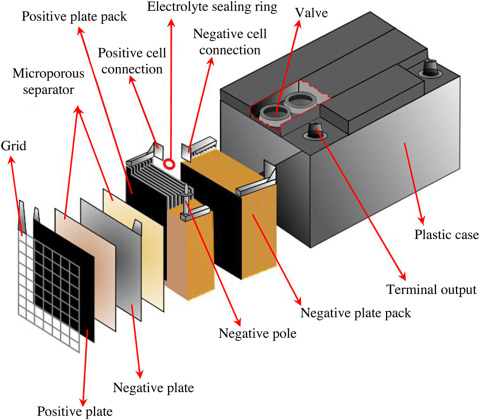Lead-acid batteries are widely used across various applications due to their reliability and cost-effectiveness. However, proper maintenance is essential to ensure optimal performance and prolong their lifespan. Here are key maintenance tips to keep your lead-acid batteries functioning at their best.
Regular Inspections
Conduct regular visual inspections of your lead-acid batteries. Check for:
Corrosion: Look for corrosion around the terminals, which can hinder performance. If found, clean the terminals with a mixture of baking soda and water; Physical Damage: Inspect the battery casing for cracks or bulges that could indicate damage. Replace any damaged batteries immediately.
Monitor Electrolyte Levels
Lead-acid batteries contain a liquid electrolyte that needs to be maintained: Check Levels: Regularly check the electrolyte levels in each cell. If the levels are low, top them up with distilled water. Avoid using tap water, as impurities can affect battery performance; Avoid Overfilling: Fill the cells to just below the vent tube. Overfilling can lead to spills and reduced efficiency.
Proper Charging Practices
Charging your lead-acid batteries correctly is crucial for their longevity: Use the Right Charger: Ensure you’re using a charger designed for lead-acid batteries, as using an incorrect type can damage the battery; Avoid Overcharging: Overcharging can cause excessive gassing, leading to loss of electrolyte and reduced capacity. Monitor the charging process and disconnect when fully charged.
Maintain Cleanliness
Keeping your batteries clean can prevent performance issues: Clean the Surface: Wipe down the battery casing to remove dirt and debris. A clean surface helps in monitoring the battery’s condition more effectively; Keep Terminals Clean: Regularly check and clean the terminals to ensure a good connection and prevent corrosion buildup.
Storage Tips
If you need to store lead-acid batteries, follow these guidelines: Charge Before Storage: Ensure the battery is fully charged before storing it to prevent sulfation, which can occur if a battery is left in a discharged state; Cool, Dry Location: Store batteries in a cool, dry place away from direct sunlight and extreme temperatures. This helps minimize self-discharge and degradation.
Regular Usage
Frequent use of lead-acid batteries can help maintain their health: Avoid Deep Discharge: Try to avoid letting the battery discharge below 50% of its capacity. Deep discharges can significantly reduce the battery’s lifespan; Cycle Regularly: If possible, use the battery regularly to ensure it remains in good working condition and to prevent sulfation buildup.
Proper maintenance of lead-acid batteries is essential for maximizing their performance and extending their lifespan. By following these maintenance tips, users can ensure that their batteries operate efficiently, ultimately saving time and money in the long run. With a little attention and care, lead-acid batteries can continue to deliver reliable energy for years to come.


